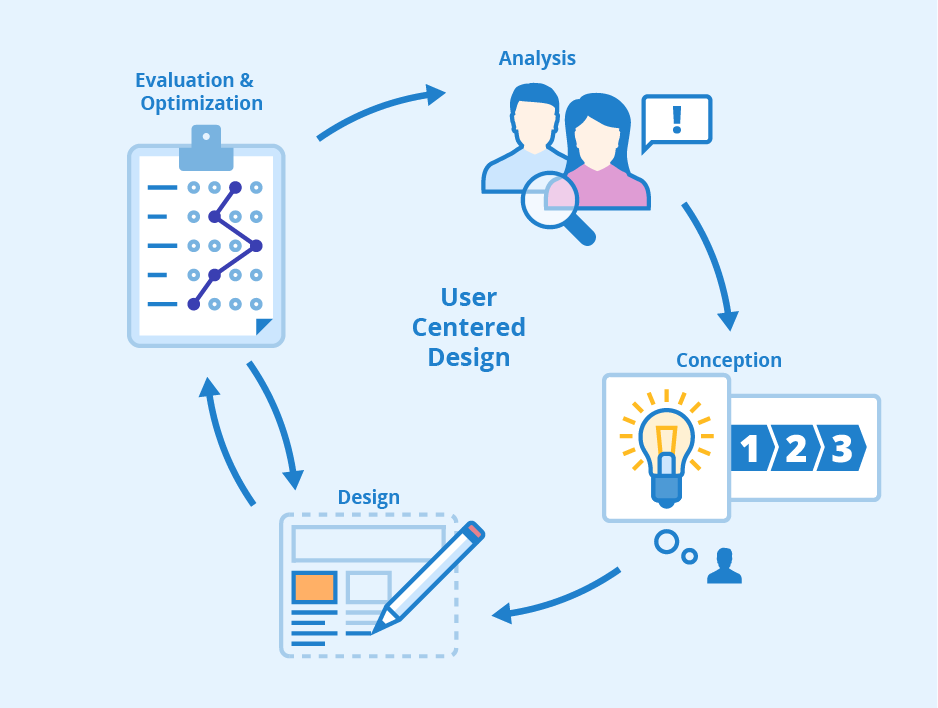
The Art of User-Centered Web Design
Website composition has developed altogether throughout the long term, from its modest starting points as basic static pages to the dynamic and intuitive sites we see today. While style and usefulness are fundamental, the way to making fruitful sites lies in a client focused approach. In this article, we will dive into the craft of client focused website architecture and investigate its standards, advantages, and best practices.
Understanding Client Focused Plan
Client focused plan, frequently shortened as UCD, is a methodology that puts the end-clients at the front of the plan cycle. It includes grasping the necessities, inclinations, and ways of behaving of the main interest group and utilizing this information to make sites that take special care of their assumptions. The center standards of client focused plan include:
Client Exploration: The most vital phase in UCD is directing exhaustive client research. This includes overviews, meetings, and ease of use testing to acquire bits of knowledge into what clients need and need from a site.
Client Persona Creation: Creating client personas helps planners imagine and feel for their interest group. These made up portrayals of genuine clients guide plan choices.
Ease of use Testing: Standard testing and input assortment guarantee that the site meets client assumptions. This iterative cycle distinguishes and address issues before send off.
Openness: A client focused plan is likewise comprehensive. Guaranteeing that the site is open to individuals with incapacities is an essential part of UCD.
Client Criticism: Ceaseless criticism from clients, through highlights like criticism structures or client examination, helps in making progressing upgrades.
The Advantages of Client Focused Website architecture
Client focused website architecture offers a few huge benefits:
Improved Client Experience: By understanding client needs and inclinations, originators can make sites that are natural and simple to explore, bringing about a more charming encounter for guests.
Expanded Client Commitment: Sites that take care of clients’ inclinations and objectives are bound to draw in guests, empowering them to remain longer and investigate further.
Higher Changes: When a site lines up with client assumptions, it’s bound to change over guests into clients, supporters, or clients of a help.
Diminished Skip Rate: Clients are less inclined to leave a site right away in the event that they view as the substance and usefulness pertinent to their necessities.
Positive Brand Discernment: A client focused site mirrors a brand’s obligation to its crowd, prompting a positive insight and expanded trust.
Best Practices in Client Focused Website composition
To make client focused sites, originators ought to follow these accepted procedures:
Begin with Exploration: Grasp your interest group through studies, meetings, and contender examination.
Make Client Personas: Foster itemized personas to address different client fragments and their objectives.
Focus on Satisfied: Spot the most basic substance and highlights where clients hope to track down them, in light of their objectives.
Versatile Responsiveness: Guarantee that your plan is receptive to various screen sizes and gadgets to give a steady encounter.
Clear Route: Plan a natural route structure with all around named menus and simple to-track down joins.
Convenience Testing: Routinely test your site with genuine clients to distinguish and address ease of use issues.
Availability: Observe web openness rules (WCAG) to make your site usable by everybody, incorporating those with inabilities.
Execution Streamlining: Enhance page stacking times and guarantee a smooth, quick client experience.
Criticism Components: Carry out input structures or reviews to assemble client assessments and ideas for development.
Repeat and Get to the next level: Use investigation and client input to refine your site constantly.
All in all, client focused website architecture is a craftsmanship that consolidates imagination with sympathy and information driven navigation. By putting the necessities and assumptions for clients at the very front of the plan interaction, originators can make sites that look engaging as well as capability instinctively and actually. This approach brings about superior client encounters, higher commitment, and at last, the outcome of the site and the brand it addresses.
Leave a Reply